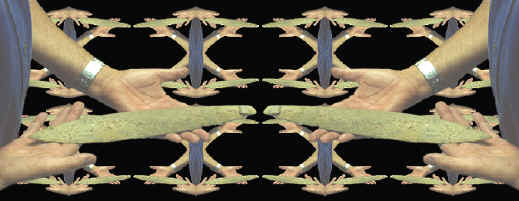|

|
|
abstract
A PREHISTORIC ARTIFACT AUCTION
FRANKE
COLLECTION
SOUTHERN
ILLINOIS
Private collections of prehistoric artifacts are often times sold on
auction. This article describes and illustrates some of the
artifacts and the auction process of a recent sale of an
old collection from southern Illinois. The collection was assembled by
Harry Franke who was born in 1899 and died in 1965. His son, Marvin,
maintained the collection until his recent death. Some of the
artifacts in the
collection were illustrated in various publications, beginning in
the 1930's to the 1950's.
The buying and selling of prehistoric artifacts
is controversial. The subject can stir the emotions of Native
Americans, scientists and even collectors. Some countries in the world have very strict antiquities
laws that do not allow the sale of artifacts. There are no such laws,
concerning legally acquired prehistoric artifacts, in the United States. The purpose of this article is not to argue
whether it is right or wrong, only to show an example of an auction
where prehistoric artifacts were sold.
|
|
|
"Auction: A public sale of items, one by
one, to the highest bidder, usually by a person licensed and authorized
for the purpose."---1979,
"Webster's Dictionary."
"It's too bad that
the Franke collection can't remain intact and available for study.
Auctions of prehistoric artifacts like this (Franke auction) also serve
to encourage people to disturb archaeological sites, sometimes doing irreparable
damage"---2005, Brad
Koldehoff (archaeologist).
"
With more than 500 Native American artifacts going for high prices at
the Franke Indian Artifacts Auction July 9, collectors and amateurs
might have gotten the idea they too could get rich by going out and
scouring the area for these same things
But
before they go picking up arrowheads and spears off the ground, people
might want to look at the laws in Illinois, pertaining to the
preservation of Native American artifacts."---2005,
Kevin Darr, "Monroe County Clarion."
"Auction
service owner Brad Schaller said the sale at the VFW in Millstadt took
in more than $200,000 for the family of long-time collector Harry Franke, who died in 1965. The Franke family resides in Columbia
(Illinois)."---2005,
George Pawlaczyk, "Bellville News Democrate."

A PREHISTORIC ARTIFACT AUCTION
FRANKE COLLECTION
SOUTHERN ILLINOIS
Not a week goes by that somewhere in the U.S. someone is selling their
small, or sometimes large, collection of prehistoric artifacts on
auction. Collections are being sold for any one of a number of different
reasons. They are sold because of illness or they were inherited or
because the person needs the money. Auctions are one of the most
common ways that collections are dispersed. This was the situation
recently with the Franke collection.
|
|

CLICK ON
PICTURE FOR LARGER IMAGE
THE AUCTIONING OF THE
FRANKE COLLECTION
FRANKE COLLECTION
SOUTHERN ILLINOIS
The auctioneer is speaking at the microphone and everyone is
beginning to settle down for the 6 1/2 to 7 hour sale of the
Franke collection. The artifacts can be seen on the tables in the
front. |
|
|
The Franke collection was sold on auction because there
were no more collectors in the family.
The collection was originally assembled by Harry Franke who was born in
1899 and died in 1965. The collection then passed on to his son Marvin
who continued the family tradition for many years. But with the recent deaths of
Marvin and his son Dennis, who was also a collector, the family
decided to sell this locally famous "old time" collection.
|
|

PROSPECTIVE BUYERS VIEWING THE
ARTIFACTS
FRANKE COLLECTION
SOUTHERN ILLINOIS
People are previewing the artifacts. This picture shows many of the
ground stone artifacts in the collection. Several axes can be seen
on the tables along with various other artifacts. |
|
|
The auction process of the Franke collection was unique, if
compared to other auctions of famous private collections. Most large
collections are sold by established "auction houses" who advertise in large well
illustrated catalogs. They encourage people to bid by phone, accept
credit cards, they charge
a 10% buyers premium and sometimes a sales tax. On the other hand, the Franke collection was
sold in a small southern Illinois town by auctioneers who specialize in real estate.
There was very little advertisement-- no catalog, buyers premium,
phone bids, credit cards or sales tax.
|
|

STUDYING A
BASAL-NOTCHED POINT
FRANKE COLLECTION
SOUTHERN ILLINOIS
A prospective buyer is studying a large basal notched point, prior
to the sale. Several other archaic points can be seen in the frame
on the table. |
|
|
The Franke auction was held in the VFW Hall in
Millstadt, Illinois on July 9, 2005. The sale contained approximately
540 lots. The auction starting time was 9:30 and the sale was over by
4:30. "Hosted by Schaller Auction Service in Millstadt, the sale
was brisk and all the items were gone by 4:30 p.m." (Kevin Darr,
"Monroe County Clarion).
|
|
CONTINUE ON TO PAGE
TWO
|
|
"REFERENCES"
1938,
Titterington, P.F., "The Cahokia Mounds Group," p. 27.
1953, Grimm, R.E., "Prehistoric Art," pp. 36-43.
1956, Hannant, Owen, "Neolithic Grooved Axes of the North
American Indian," Central States Archaeological Journal, p.
134.
1958, Franke, Harry, "Central States Archaeological
Journal," pp. 116, 118 & 119.
2005, Darr, Kevin, "Auction Showcases Extra Large Collection,"
Monroe County Clarion.
2005, Pawlaczyk, George, "Prehistoric Indian Artifacts Bring
In $200,000 At Auction," Bellville News Democrat.
Personal communications with Brad Koldehoff.
|
|
RECENT
LISTINGS HOME
ORDERING |




